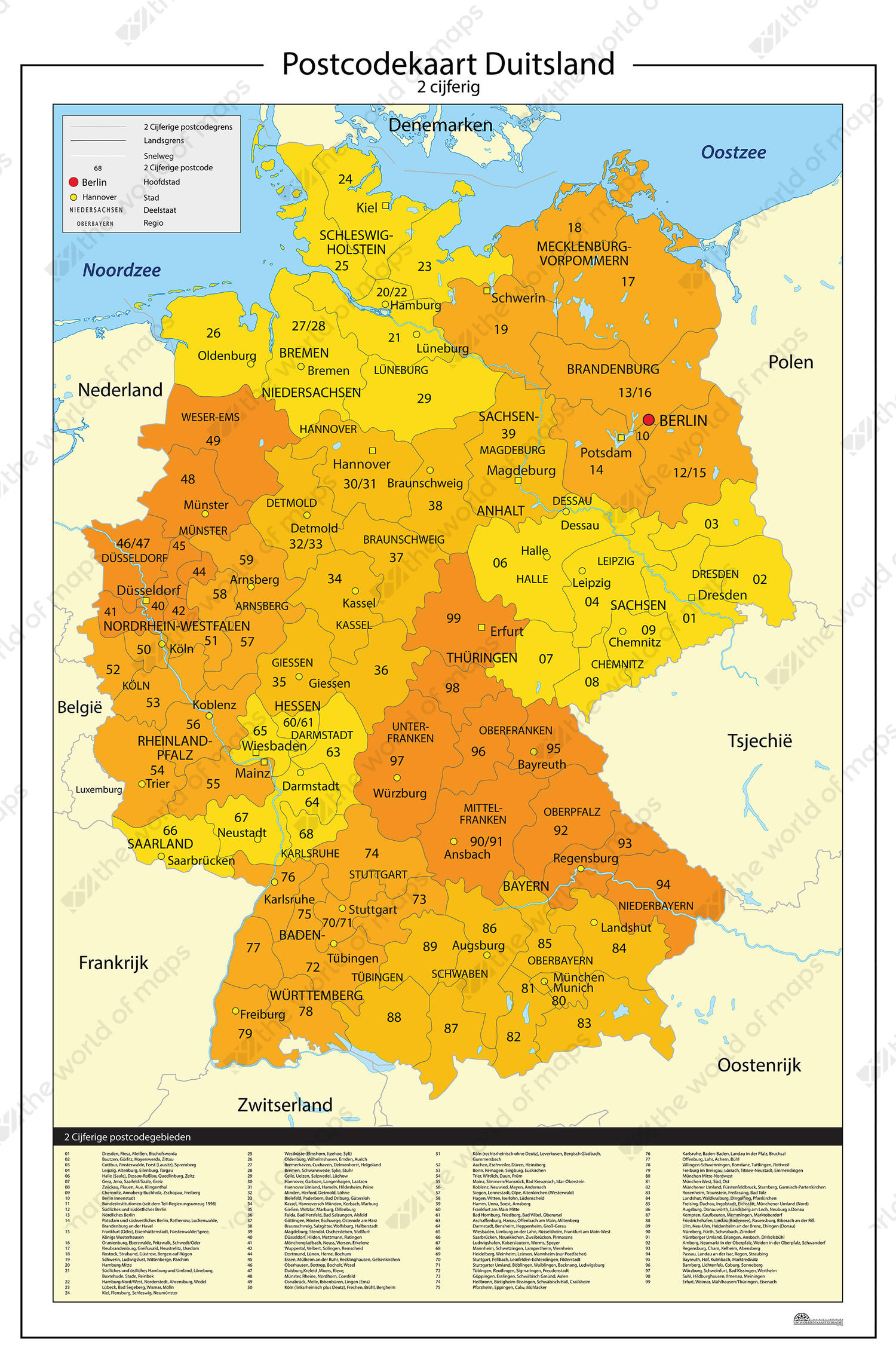How Are Postal Codes Determined? The Surprising Secrets Behind Your ZIP Code
Have you ever wondered how postal codes are determined? It’s not just a random string of numbers, my friend. There’s an entire system behind those digits that plays a crucial role in ensuring your mail gets where it needs to go. Postal codes aren’t just for sorting mail—they’re like the GPS for your address. So, let’s dive into the fascinating world of postal codes and uncover how they’re determined.
Postal codes might seem like a boring topic at first glance, but trust me, they’re more interesting than you think. They’re like secret codes that help the postal service navigate through millions of addresses every day. Without them, sending a letter or package would be a chaotic mess. So, buckle up because we’re about to unravel the mystery behind how postal codes are determined.
In this article, we’ll explore everything you need to know about postal codes. From their history to how they’re assigned, we’ll cover it all. You’ll learn why certain areas have specific codes and how these codes are updated over time. By the end of this, you’ll be a postal code expert, ready to impress your friends with your newfound knowledge.
- Haircuts With Glasses And Bangs The Ultimate Guide For A Trendy Look
- Over 50 Edgy Short Grey Haircuts A Bold Fashion Statement For Every Occasion
Understanding the Basics of Postal Codes
Let’s start with the basics. Postal codes, also known as ZIP codes in the United States, are numerical or alphanumeric codes assigned to specific geographic areas. They’re used by postal services worldwide to sort and deliver mail efficiently. But how exactly are postal codes determined? It’s not as simple as picking random numbers. There’s a method to the madness, and it’s based on several factors.
What Are Postal Codes and Why Are They Important?
Postal codes are like the address labels for entire neighborhoods. They help postal workers quickly identify where a piece of mail is headed. Without them, sorting mail would be a nightmare. Imagine trying to figure out which city, state, or country a letter is going to without any guidance. Postal codes make the process smoother and faster, saving time and resources.
Here are a few reasons why postal codes are so important:
- Short Shaved Hairstyles For Older Ladies Bold Beautiful And Timeless
- 60yearold Women Hairstyles That Embrace Your Inner Fabulousness
- They improve mail delivery accuracy.
- They reduce the risk of lost mail.
- They help businesses target specific geographic areas for marketing.
- They assist in emergency services planning and logistics.
Postal codes aren’t just for the postal service—they’re valuable tools for businesses, governments, and even individuals. They’re like the unsung heroes of the mail world, quietly doing their job without much fanfare.
The History of Postal Codes
Postal codes haven’t always been around. In fact, they’re a relatively modern invention. The concept of postal codes was first introduced in the mid-20th century as postal systems around the world struggled to keep up with increasing mail volumes. The United States was one of the pioneers in this area, introducing the Zone Improvement Plan (ZIP) code system in 1963.
How Did Postal Codes Evolve Over Time?
When postal codes were first introduced, they were simple and straightforward. But as populations grew and cities expanded, postal services had to adapt. Today’s postal codes are more complex and sophisticated, reflecting the needs of modern society. For example, the U.S. ZIP code system has evolved from a five-digit code to a nine-digit ZIP+4 code, which provides even more precise location information.
Here’s a quick timeline of how postal codes have evolved:
- 1940s: First postal codes introduced in Germany and the Soviet Union.
- 1960s: U.S. introduces the ZIP code system.
- 1970s: Many countries adopt postal code systems.
- 1990s: Advanced postal codes with additional digits are introduced.
The evolution of postal codes mirrors the growth and development of global postal systems. As technology advances, postal codes will likely become even more precise and efficient.
Factors That Determine Postal Codes
Now that we know what postal codes are and where they came from, let’s talk about how they’re determined. Several factors influence the assignment of postal codes, and it’s not as straightforward as you might think. It’s a complex process that involves geography, demographics, and even politics.
Geographic Location
One of the primary factors in determining postal codes is geographic location. Postal services divide regions into zones based on their physical location. These zones are then assigned unique codes to help with mail sorting and delivery. For example, in the U.S., the first digit of a ZIP code represents a broad region, such as the Northeast or Midwest.
Population Density
Population density also plays a big role in determining postal codes. Areas with higher population densities typically have more postal codes to accommodate the increased mail volume. For instance, a bustling city like New York City might have dozens of postal codes, while a small rural town might only have one.
Political and Administrative Boundaries
Political and administrative boundaries can also affect postal code assignments. In some cases, postal codes are aligned with city or county lines. However, this isn’t always the case, as postal services often prioritize efficiency over strict adherence to political boundaries.
How Are Postal Codes Assigned?
Assigning postal codes is a meticulous process that involves collaboration between postal services and local governments. It’s not something that happens overnight. Postal services use a combination of data analysis, field research, and community input to determine the best way to assign postal codes.
Data Collection and Analysis
Data collection is a crucial step in the postal code assignment process. Postal services gather information about population distribution, mail volume, and geographic features to create accurate and efficient postal code zones. This data is then analyzed to identify the most logical way to divide an area into postal code zones.
Field Research
Field research is another important component of the process. Postal workers often visit areas in person to gather firsthand information about the local geography and infrastructure. This helps ensure that postal codes are assigned in a way that makes sense for both the postal service and the community.
Community Input
Community input is also considered when assigning postal codes. Local residents and businesses are often consulted to ensure that the new postal codes won’t cause confusion or inconvenience. After all, the goal is to make mail delivery easier, not harder.
Challenges in Determining Postal Codes
While the process of determining postal codes might sound simple in theory, it’s not without its challenges. There are several factors that can complicate the assignment of postal codes, from rapid urbanization to political disputes.
Rapid Urbanization
Rapid urbanization is one of the biggest challenges facing postal services today. As cities grow and expand, postal services must constantly update their postal code systems to keep up. This can be a daunting task, especially in countries with high population growth rates.
Political Disputes
Political disputes can also complicate the assignment of postal codes. In some cases, disagreements over borders or administrative boundaries can lead to delays or inconsistencies in postal code assignments. This can cause confusion for both postal workers and the public.
Technological Advancements
Technological advancements are changing the way postal codes are determined. With the rise of GPS and digital mapping technologies, postal services can now create more precise and efficient postal code systems. However, this also requires significant investment in technology and training.
The Future of Postal Codes
So, what does the future hold for postal codes? As technology continues to evolve, postal codes will likely become even more sophisticated and precise. We might see the introduction of new types of postal codes, such as those based on GPS coordinates or digital addresses.
Emerging Technologies
Emerging technologies like blockchain and artificial intelligence could revolutionize the way postal codes are used. Imagine a world where every address has a unique digital identifier that can be easily verified and tracked. This could make mail delivery faster, more secure, and more efficient.
Global Standardization
Another possibility is the development of a global postal code standard. With more and more businesses operating internationally, having a universal system for postal codes could simplify cross-border mail delivery. However, achieving this would require cooperation and agreement from postal services around the world.
How Postal Codes Impact Daily Life
Postal codes might seem like a small part of our daily lives, but they have a big impact. They affect everything from mail delivery to online shopping to emergency services. Without postal codes, many of the conveniences we take for granted wouldn’t be possible.
Mail Delivery
Of course, the most obvious impact of postal codes is on mail delivery. They help postal workers sort and deliver mail quickly and accurately, ensuring that your letters and packages reach their destination on time.
Online Shopping
Postal codes are also essential for online shopping. When you enter your address during checkout, the postal code helps the retailer determine shipping costs and delivery times. Without it, online shopping would be much more complicated.
Emergency Services
Postal codes play a crucial role in emergency services planning and logistics. They help emergency responders quickly locate and respond to incidents, potentially saving lives in the process. In some cases, postal codes are even used to prioritize emergency response efforts.
Conclusion
So, there you have it—the fascinating world of postal codes. From their humble beginnings to their modern-day complexities, postal codes have come a long way. They’re not just a bunch of numbers—they’re a vital part of our daily lives, helping to keep the world connected and running smoothly.
Now that you know how postal codes are determined, you can appreciate the thought and effort that goes into creating and maintaining these systems. Whether you’re sending a letter, shopping online, or calling for emergency services, postal codes are working behind the scenes to make your life easier.
So, the next time you see a postal code, take a moment to appreciate its importance. And if you found this article helpful, don’t forget to share it with your friends and family. Who knows? You might just turn them into postal code enthusiasts too!
Table of Contents
- Understanding the Basics of Postal Codes
- The History of Postal Codes
- Factors That Determine Postal Codes
- How Are Postal Codes Assigned?
- Challenges in Determining Postal Codes
- The Future of Postal Codes
- How Postal Codes Impact Daily Life
- Conclusion
- Women Haircuts The Ultimate Guide To Finding Your Perfect Look
- Over 50 Edgy Short Grey Haircuts A Bold Fashion Statement For Every Occasion

Zip Codes For Vietnam, Postal Codes In Vietnam 2023 All 63, 57 OFF

Postal Codes In Germany Wikipedia, 48 OFF

Pakistan Postal Codes Post Zip Codes Lahore